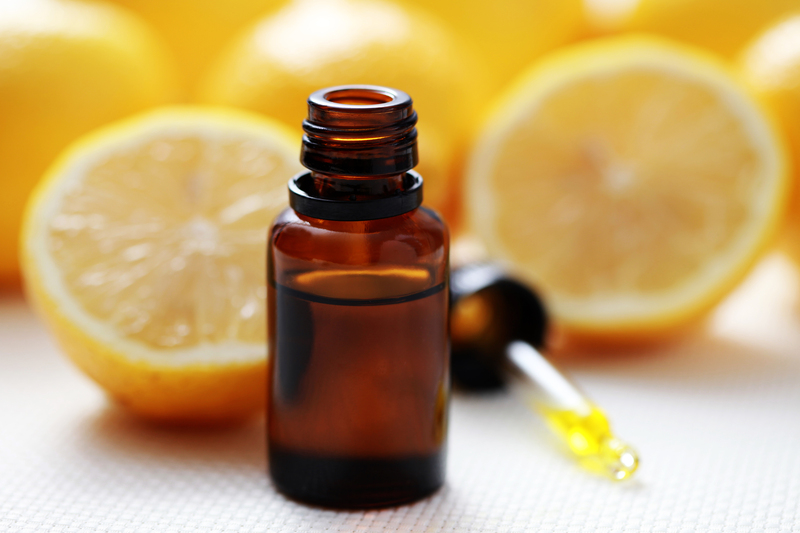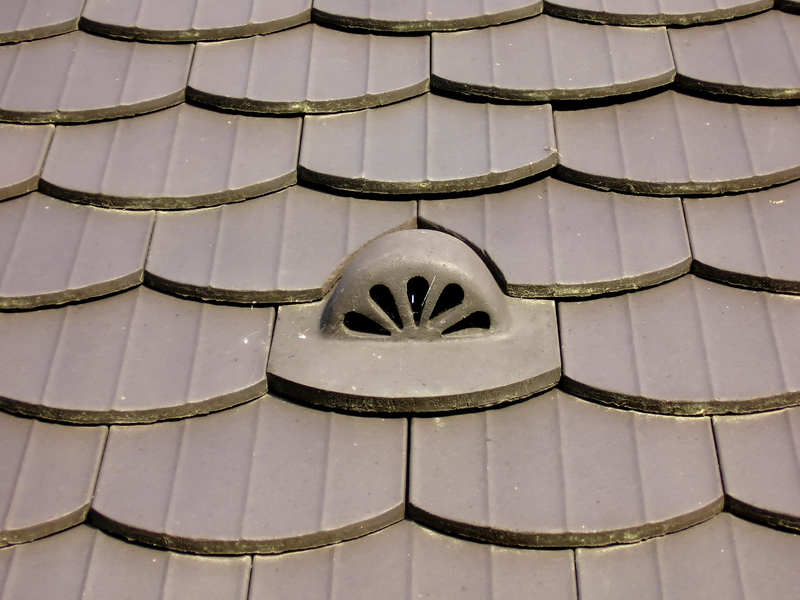From Gritty to Gleaming: Eliminating Burnt-on Stovetop Residue
Posted on 13/09/2025
From Gritty to Gleaming: Eliminating Burnt-on Stovetop Residue
Has your kitchen's centerpiece lost its shine? Stovetops take a daily beating, with burnt-on residue and stubborn grease stains making even the most pristine kitchen look dull and uninviting. If you're on a mission to revamp your grimy stovetop into a gleaming focal point, you've come to the right place. In this comprehensive guide, learn how to effectively eliminate burnt-on stovetop residue, prevent future buildups, and maintain a sparkling cooking surface--all while using safe, budget-friendly techniques.
Understanding Burnt-on Stovetop Residue: The Culprits
The unsightly brown and black patches that cling to your stovetop aren't just unattractive--they can even impair the effectiveness of your appliance. Most often, burnt-on residue results from:
- Food spillovers that char and cement onto the surface
- Oil and fat splatters that turn sticky, trapping dust and dirt
- High cooking temperatures that literally bake on stains
- Irregular cleaning, allowing each spill to build upon the last
These residues aren't just tough on your eyes--they can also release unwanted odors and even create a fire hazard if left too long. But worry not: with a little know-how, getting your stovetop shimmering is completely within reach.

Preparation: What You'll Need to Remove Burnt-on Residue
Before diving into burnt-on stovetop cleaning, assemble your toolkit. Most of these items are already in your kitchen:
- Baking soda - gentle yet effective at breaking down caked-on stains
- White vinegar - a natural degreaser and disinfectant
- Dish soap - to cut through grease
- Non-abrasive scrub pads or sponges
- Plastic scraper or old credit card
- Clean microfiber cloths
- Optional: Hydrogen peroxide, lemon juice, or commercial stovetop cleaner
Always ensure the stovetop is cool before starting! For electric or glass cooktops, unplug or turn off all elements to remain safe.
Step-by-Step: Eliminating Burnt-on Stovetop Residue
1. Initial Wipe-down: Remove Loose Debris
Using a damp microfiber cloth, gently wipe away crumbs and loose particles from your stovetop. This step prevents scratching during the more intensive cleaning rounds. Don't forget to remove grates or burners (if applicable) and soak them separately in hot, soapy water.
2. The Baking Soda and Vinegar Method
Perhaps the gold-standard for tackling gritty burnt-on stovetop residue, this natural approach leverages the power of two household staples:
- Sprinkle baking soda across the affected areas, focusing on heavily stained spots.
- Spray white vinegar (mixed 1:1 with water) over the baking soda. The mixture will begin to fizz, loosening scorched bits.
- Let it sit for 10-15 minutes. For thicker layers of residue, give it 20-30 minutes.
- Using a plastic scraper or an old credit card at a gentle angle, carefully lift away softened debris.
- Wipe clean with a damp, clean cloth.
For stubborn burnt-on layers, repeat the process or, after the initial fizzing, dampen a scrub pad with a bit more vinegar and gently scrub in circular motions.
3. Targeting Particularly Stubborn Spots
Some burnt-on food residues just don't want to budge. Here's what to do:
- Hydrogen peroxide trick: Pour a small amount over the baking soda, let it bubble for 5-10 minutes, then scrub away. This is safe for most glass or ceramic stovetops.
- Boiling water method: If your stovetop is metal, carefully pour hot water over tough spots, allowing heat to break the bond. Let cool before proceeding with scrubbing.
- Lemon power: Rub a halved lemon directly on the residue; the acidic juice naturally dissolves discoloration and leaves a fresh scent.
4. Clean the Grates and Knobs
While your stovetop surface decontaminates, tackle metal grates, burner caps, and knobs:
- Soak all removable parts in hot, soapy water for at least 30 minutes
- Scrub with a non-abrasive brush or sponge
- Rinse and let dry thoroughly before reassembling
5. Finish with a Streak-Free Polish
Once the residue is eliminated, wipe the entire stovetop with a clean, damp microfiber cloth to clear away any remaining cleaner. To achieve a streak-free finish and really make your stovetop gleam:
- Buff dry with a separate, lint-free cloth
- Optional: Add a drop of olive oil or stovetop polish and buff for extra shine
Tip: For glass surfaces, a tiny amount of white vinegar on your final wipe wards off fingerprints and smudges.
Specific Stovetop Types: Tailored Burnt-on Residue Solutions
Gas Stovetops
Gas burners and their intricate parts can make residue removal tricky. Always check the manufacturer's instructions before cleaning. If using water around ignition points, ensure parts are fully dry before reassembling.
Glass or Ceramic Stovetops
These sleek surfaces scratch easily. Avoid steel wool or abrasive powders. Favor soft sponges and plastic scrapers, and consider specialized ceramic stovetop residue removers for really tough stains.
Electric Coil Tops
Unplug coils and wipe gently with a damp, soapy cloth--but avoid soaking the coils themselves, as moisture can cause damage. Burner pans underneath can often be soaked and scrubbed as needed.
Prevention: Keeping Stovetops Gleaming Long-Term
The best way to combat burnt-on stovetop residue is to stop it before it starts. Adopt these proactive habits:
- Wipe up *spills and splatters immediately*--the fresher the better
- Clean with soap and water after every heavy cooking session
- Do a deep clean (using the methods above) weekly or biweekly
- Use burner liners or drip pans to catch excess debris
- Never use abrasive tools that can scratch and damage surfaces
Not only will prevention save you time and energy, it will extend the life of your appliance and maintain a healthy, inviting kitchen.
Safe Cleaning: Stovetop Dos and Don'ts
- Do check your appliance's manual for specific guidelines on chemical usage
- Do test new solutions on small sections first
- Don't use knives or metal scouring pads--these can irreparably scratch or damage your stovetop
- Don't let cleaning liquids seep into electrical components or control panels
When to Call a Professional
Despite your best efforts, some burnt-on stovetop residue may defy all home remedies--especially if it's deeply embedded or has caused surface damage. If you notice persistent marks, discoloration, or malfunctions:
- Consult a certified appliance technician
- Don't attempt to disassemble or repair electrical parts on your own
- Request professional cleanings for luxury or specialty stovetops (like induction or commercial-grade ranges)

Eco-Friendly Cleaning Alternatives
Protect both your home and the environment. Go green while eliminating burnt stovetop stains by choosing:
- Natural acids (like vinegar and lemon)
- Baking soda as a scrub alternative
- Reusable cloths and scrubbers over single-use wipes
- Minimalist, non-toxic commercial cleaners labeled for kitchen use
Summary: From Gritty Disgrace to Gleaming Grace
Revitalizing a burnt, gritty stovetop can seem intimidating--but armed with simple tools, household ingredients, and a little patience, anyone can restore their stovetop to its former luster. By following the steps in this guide, you'll not only eliminate burnt-on residue but set the stage for effortless future upkeep. Remember, the key is consistency: treat your stovetop well after every meal, and it will reward you with both beauty and performance.
Ready to say goodbye to burnt-on stovetop grime?
With these trusted cleaning techniques and preventative strategies, any kitchen can move from gritty to gleaming--making cooking a joy once again. Share your success or favorite cleaning hacks below, and let's all keep our stovetops sparkling!





